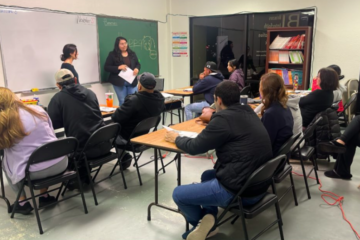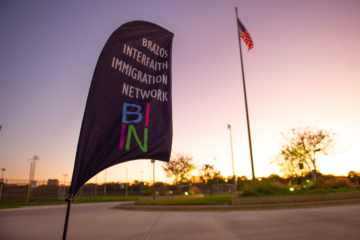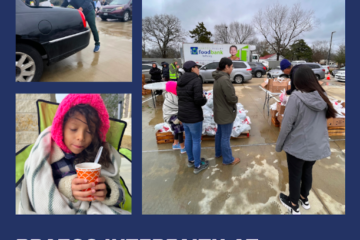Allies Spring into Action
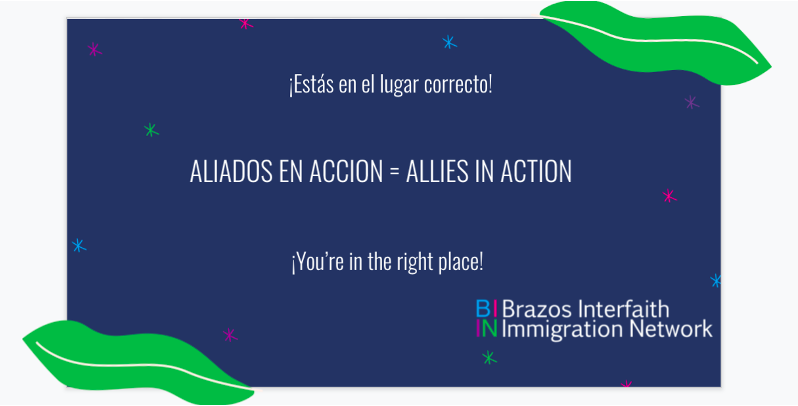
Many people are familiar with BIIN’s long-standing citizenship and Conversational English classes and the Information/Referral/Assistance (IRA) program. But there’s another program, known as “Allies in Action,” that has been added to the organization’s offerings in the last year.
After a five-week pilot in the fall of 2020, Allies in Action resumed in February 2021 for the spring term. The program met via Zoom on Wednesday afternoons from 4 to 5:30 pm, for twelve weeks. The spring leadership team included interns Arleth Murguia-Chavez and Bianca Lasagna, long-time BIIN volunteer Françoise Bracher and BIIN staff member Janet Morford. While attendance fluctuated somewhat, seven adult learners participated regularly throughout the term, along with their “allies,” the dozen or so volunteers who worked with the students in pairs or trios.
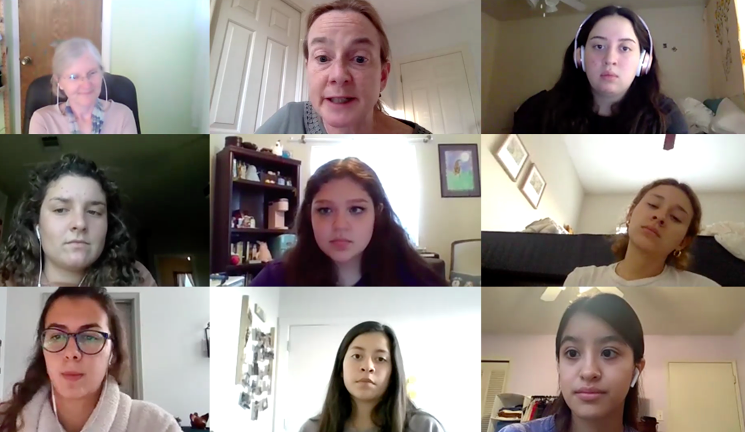
Although Allies in Action uses the same English textbook series as the Conversational English classes, the structure of classes is somewhat different. The smaller scale and high volunteer to student ratio in the Allies program made it possible to work at a very individualized pace. At the beginning of the semester, students did a self-assessment to determine the level and chapter in the textbook series where they would begin. Meeting week after week with their assigned volunteer(s), students could then work at their own pace.
Each Allies class would begin with some communication exercises and warm-ups, which were designed to be inclusive of any children who might be present at the outset. Sometimes, one or more of the school-aged children would help read a children’s picture book, and then were invited to draw a picture in response to a simple prompt, “while the adults work.” Group announcements or a short group lesson on phonetics in English or a specific feature of Zoom or another digital tool would follow. But for the bulk of the time, usually about an hour, adult learners and their volunteer “allies” would meet together in pairs or trios in breakout rooms. This enabled the students to work at their own pace, while receiving a great deal of individualized guidance and support.
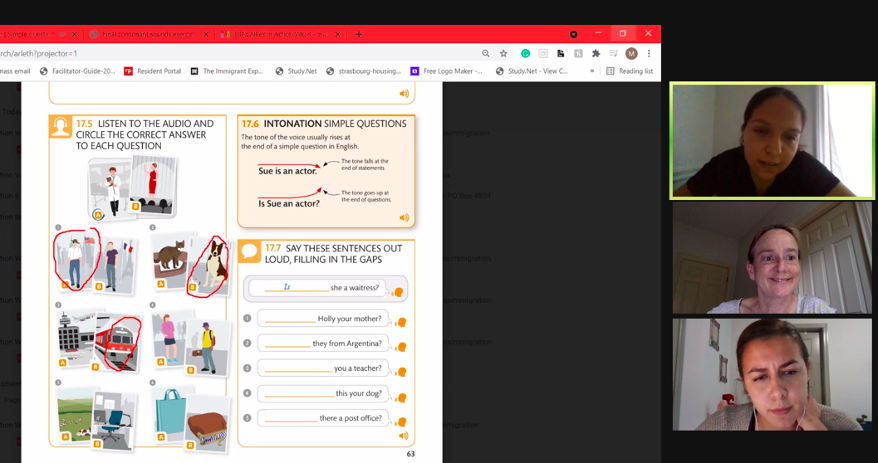
The volunteers give you time to practice and to have conversations. This makes it easy for you to move at your own pace. Since you are interacting with one person, you can ask anything you need and get answers right away. Since it’s only you and the volunteer, you feel free to speak, and they explain everything very well to you.
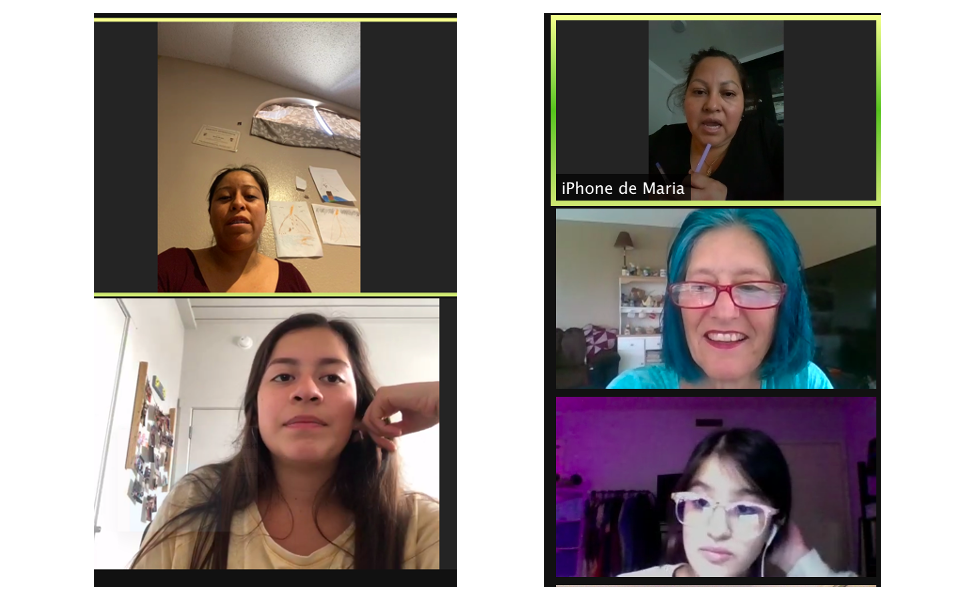
In the beginning, it was frustrating, because I wasn’t used to using the computer. And it felt strange, being on line, and having everyone look at me. But then I realized that if I didn’t get over this, I wouldn’t be able to move forward, and it was better to have courage and learn how to do this. So I just kept learning, and now it comes easily to me.
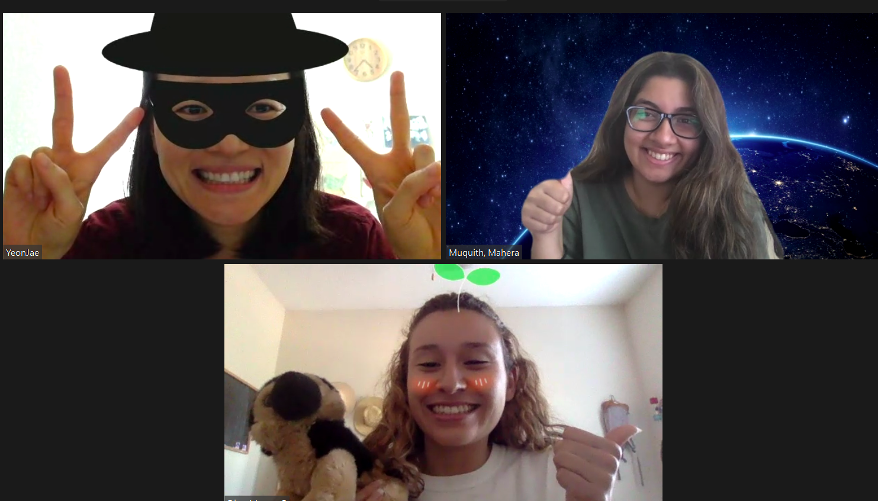
We then divided into two bigger groups, sending all volunteers to one breakout room, and all of the students with our two bilingual interns to the other. Everyone then had a few minutes to prepare a few lines about what they appreciated in their partner. When we came back together in the main session, the volunteers took turns sharing their words of recognition and praise with the adult learners, and students had the option of sharing their thanks out loud or in the chat. This chance to share what each partner had seen in the other made it clear that besides helping each other learn specific skills, participants had forged relationships of mutual respect and affection.
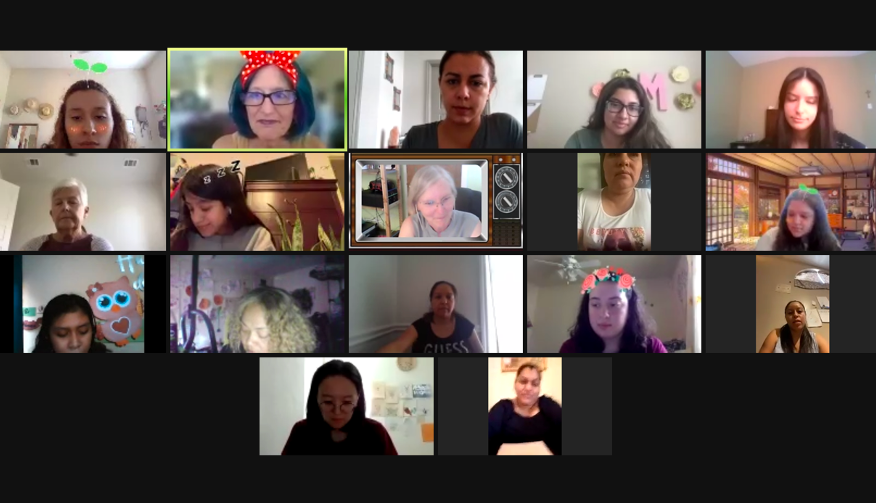
Allies in Action is on hiatus during the summer, but many of its participants are looking forward to the program resuming in the fall. If you would like to help lead the program or to serve as a regular volunteer, please reach out to Janet Morford at janet@brazosimmigration.com.
